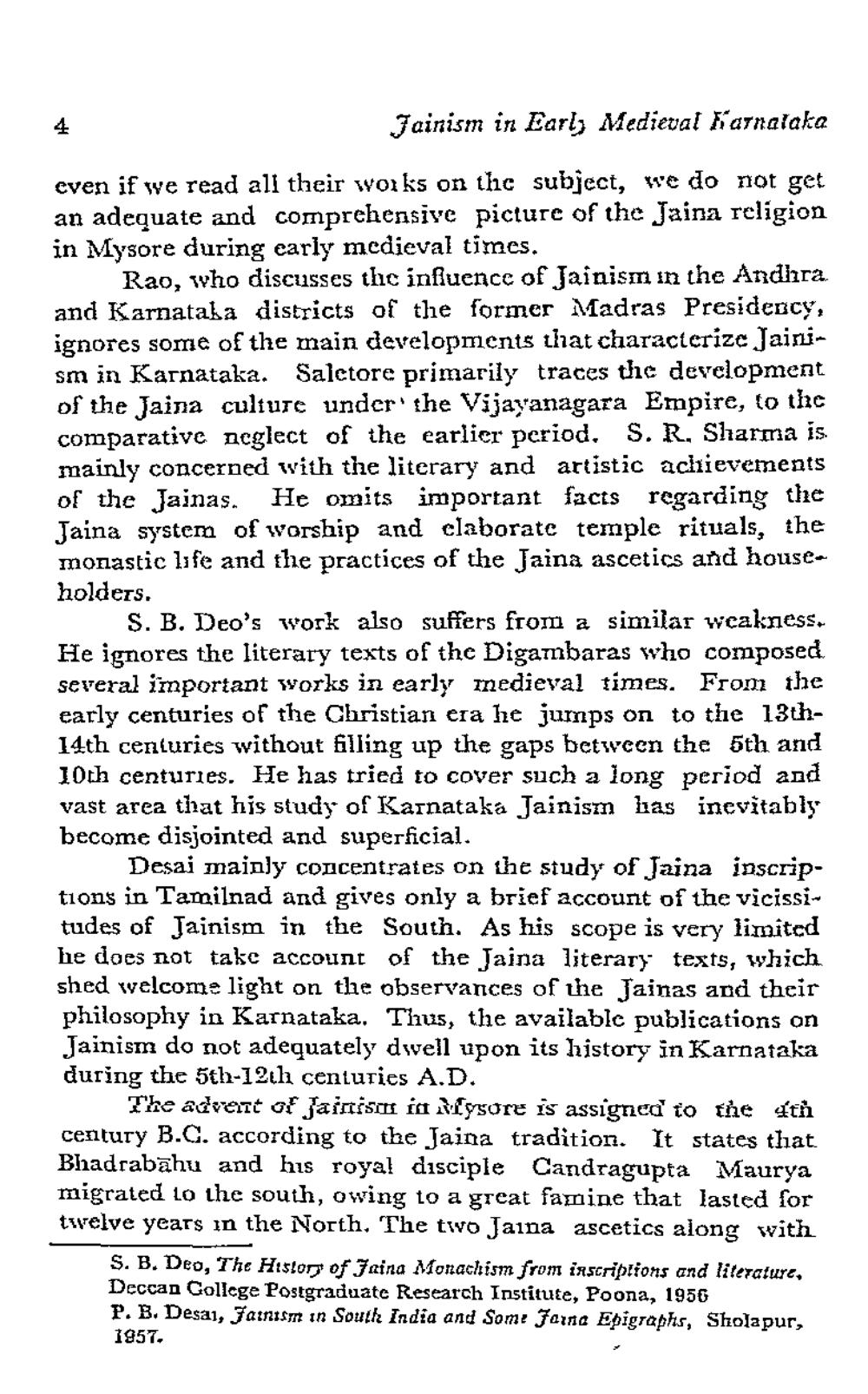________________
Jainism in Earls Medieval barnataka
even if we read all their works on the subject, we do not get an adequate and comprehensive picture of the Jaina religion in Mysore during carly mcdieval times.
Rao, who discusses the influencc of Jainism in the Andhra and Karnataka districts of the former Madras Presidency, ignores some of the main developments that characterize Jainism in Karnataka. Salctore primarily traces the development of the Jaina culture under the Vijayanagara Empire, to the comparative neglect of the earlicr period. S. R. Sharma is. mainly concerned with the literary and artistic achievements of the Jainas. He omits important facts regarding the Jaina system of worship and claboratc temple rituals, the monastic life and the practices of the Jaina ascetics and householders.
S. B. Deo's work also suffers from a similar weakness. He ignores the literary texts of the Digambaras who composed several important works in early medieval times. From the early centuries of the Christian era he jumps on to the 13th14th centuries without filling up the gaps between the 5th and 10th centuries. He has tried to cover such a long period and vast area that his study of Karnataka Jainism has inevitably become disjointed and superficial.
Desai mainly concentrates on the study of Jaina inscriptions in Tamilnad and gives only a brief account of the vicissitudes of Jainism in the South. As his scope is very limited he does not take account of the Jaina literary texts, which shed welcome light on the observances of the Jainas and their philosophy in Karnataka. Thus, the available publications on Jainism do not adequately dwell upon its history in Karnataka during the 5th-12th centuries A.D.
The advent of Jainisas in Mysore is assigned to the 4tn century B.C. according to the Jaina tradition. It states that Bhadrabahu and his royal disciple Candragupta Maurya migrated to the south, owing to a great fanine that lasted for twelve years in the North. The two Jaina ascetics along with
S. B. Deo, The History of Faina Monachism from inscriptions and literature, Deccan College Postgraduate Research Institute, Poona, 1956 P. B. Desai, Fannis in South India and Some Feng Epigraphs, Sholapur, 1957.




